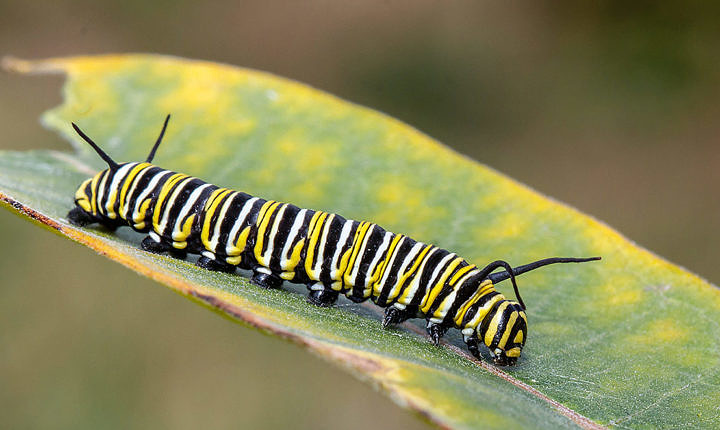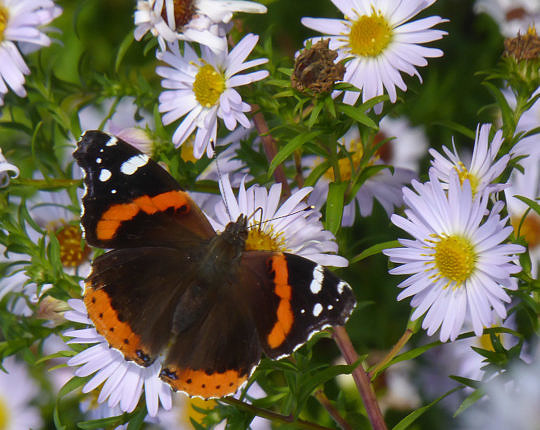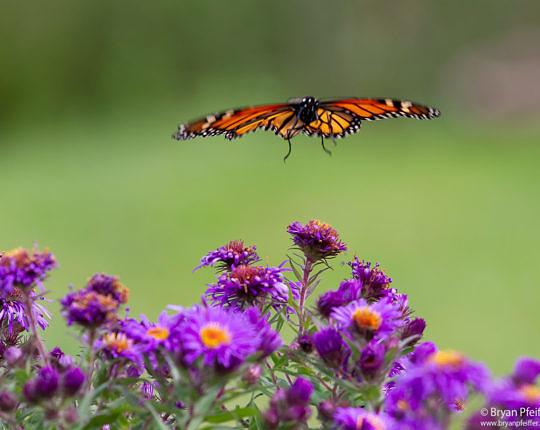
Monhegan Migration Report No. 3
The Flight and Fate of Coastal Maine Monarchs
Migrate or die. Such is the fate of Monarchs here on Monhegan Island every autumn. But where do these Monarchs — 10 miles out to sea in the Gulf of Maine — spend the winter?
 Monhegan’s Monarchs aren’t exactly off-course. Although the bulk of the Monarch migration passes through the central part of the continent, we know that the coast, including these islands, represents a well-travelled route in the journey of this tenacious butterfly.
Monhegan’s Monarchs aren’t exactly off-course. Although the bulk of the Monarch migration passes through the central part of the continent, we know that the coast, including these islands, represents a well-travelled route in the journey of this tenacious butterfly.
But coastal Monarchs reach over-wintering sites in Mexico at far lower rates than Monarchs migrating west of the Appalachian chain (Brinzda, 2008). Many of Monhegan’s Monarchs could end up in Florida, Cuba and other Caribbean islands, adding to the growing year-round breeding Monarch populations in the region.
Hypotheses abound to explain the fate of coastal migrants. It’s not only that outposts like Monhegan make for a longer trip to Mexico, with the Appalachians among the barriers. Northwest winds, blowing more often as the fall progresses out here, could force Monarchs out to sea, or at least to remain eastbound as they head south. Then the jump across the Gulf of Mexico would be too great a journey.
It also turns out (in the study I cited above) that coastal migrants on average have slightly shorter wings and weigh less than their inland counterparts. The lower weights reflect, in part, reduced lipid (fat) content in the body of a Monarch. And like migrating birds, Monarchs need fat to fuel their flights south.
So why are the coastal Monarchs less fatty? That could result from degradation of nectar sources along the Atlantic coast, some of the most densely populated territory on the continent. Housing and commercial development strike again. But not really here on Monhegan. This island is a garden, exploding in bursts of goldenrods and asters. Farther south, along the Eastern Seaboard, the prospects aren’t so great, particularly for the laggards still chewing milkweed or waiting to emerge out here.
In truth, we still have lots to learn about Monarch migration, particularly the fate of these late-season coastal migrants. In any event, Monarchs are now flying on Monhegan at every turn — flames in flight over one of the most beautiful places on Earth.
Here’s a poem from my friend Kristen Lindquist, who’s been birding out here the past couple of weeks (but just left us for home in Camden). After you read, find my other Monhegan reports on the blog.
MONARCH
By Kristen Lindquist
Next to the budding stubs of milkweed pods,
a monarch caterpillar—striking with its stripes
of black and yellow—chews away on the noxious
leaves, making itself poisonous, while a dozen butterflies
flit around my head, casting some kind of spell
on me as their tiger orange wings slowly beat
against the summer heat, those wings also toxic,
so when they’re migrating hundreds of miles south
and a falcon grabs one in midair, the bug will taste
so bitter the bird will spit it out and let it flap
a little farther down the coast to visit another field
like this one and revive on nectar, its bold wings
a bit tattered now—and you’ll be walking past it
paused on an aster and see that it’s a male,
two tiny glands visible on its upper hind wings,
and then ponder for a moment toxicity and death,
metamorphosis and pheromones, those small, great
mysteries, before continuing along with your net.
References
Brindza, L.J, L.P. Brower, A.K. Davis, T. Van Hook. 2008. Comparative Success Of Monarch Butterfly Migration To Overwintering Sites In Mexico From Inland And Coastal Sites In Virginia. Journal of the Lepidopterists’ Society 62(4), 2008,189-200.





I really enjoyed my first time being a monarch hoist searching for eggs then searching for the milkweed planet but only finding the fine Vine not sure of the name I searched high and low for the common milkweed plant near found one until the end of summer behind a neighbor’s garage behind a bunch of bushes found one pod that I saved and plan to a plant that I’ve watched and I toasted over 25 monarch caterpillars and then released 20 of them. Not sure how many male females just know it was fun watching them come out of their chrysalis and waiting for them to dry and then see them fly away my joy it was. Also as I I was looking for the milkweed I shared with the neighbors the importance of the vine and the common milkweed a lot of them did not know and they thanked me for the knowledge that I gave them. I learned a lot of do’s and don’ts while hosting the monarchs so my experience next timer should be a little bit easier.
Thanks for this success story, Suzanne. One great thing about butterflies is that their bond with plants help us become more aware of plants as well!
Bryan, I live in northern Virginia and plenty of Monarchs come through here during the fall, not just for travelling south, but also for breeding. Many offspring are hatched in September. Is it possible the smaller monarchs you see are not the super monarchs because they still have at least one additional generational leg to travel?